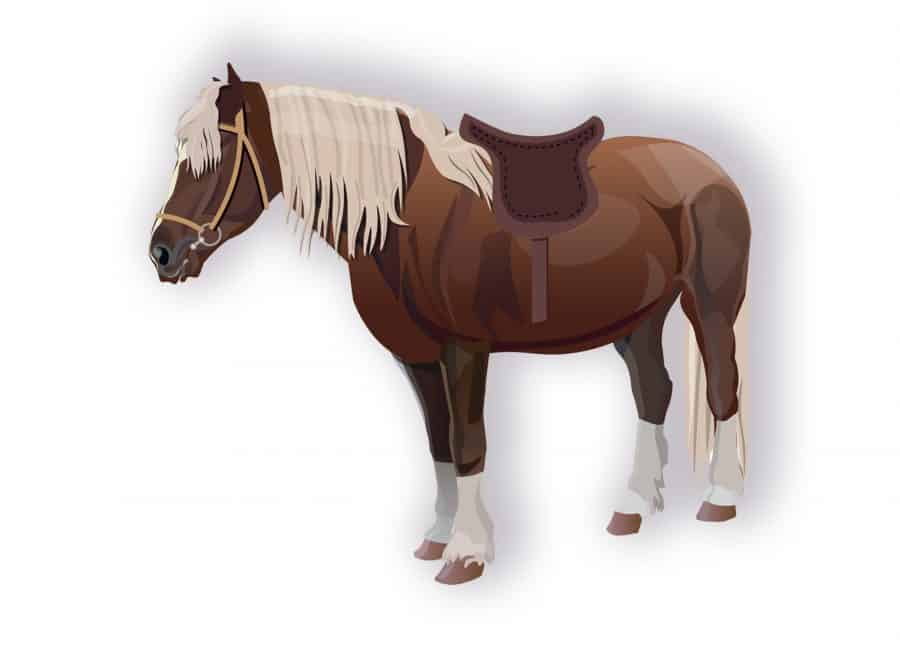Symptoms of Horse Ulcers (EGUS)
Equine gastric ulcer syndrome (commonly referred to as EGUS) affects domesticated horses. Although racehorses and event horses that compete at a high level of competition…

Equine gastric ulcer syndrome (commonly referred to as EGUS) affects domesticated horses. Although racehorses and event horses that compete at a high level of competition are at the highest risk, gastric ulcers can occur in all horses of any age. As owners, it’s important that we’re familiar with the symptoms of horse ulcers – particularly early signs of ulcer development – and the steps we can take to prevent the formation of ulcers in the first place.
What are gastric ulcers?
Gastric ulcers develop when digestive acids (hydrochloric acid) in a horse’s stomach come into contact with the upper part of the stomach.
Stomach acidity can be managed through eating. As forage passes through the stomach it reduces acidity, as well as encouraging the production of saliva which contains bicarbonate – able to neutralise acid. In their natural environment horses graze up to sixteen hours a day, meaning that stomach acid is kept at bay, however, most domesticated horses are stabled for long periods of time and the natural preventative processes can only continue if they have access to hay ad-lib. Limited hay and grazing time, as well as high-concentrate diets increases stomach acidity and the risk of gastric ulcers developing.
Other factors that increase the likelihood of your horse developing gastric ulcers include high stress levels and fast work.
Symptoms of horse ulcers
Standlee Forage suggest that ‘close to 90%’ of performance horses are afflicted by gastric ulcers.
Decreased performance.
Has your horse started to refuse jumps or become reluctant to go forwards?Change in attitude.
Girthy whilst being tacked up, grumpiness, and nappy behaviour are all warning signs.Poor condition.
A drop in weight, difficulty maintaining a healthy weight, or a dull coat may suggests EGUS.Appetite change.
Eating less than usual or increasingly fussy indicate EGUS.Confirmation of gastric ulcers can only come from a vet who will undertake a gastric endoscopy. A gastric endoscopy allows a vet to view your horse’s stomach lining.
Prevention
If your horse has had gastric ulcers in the past consult your vet for the best practice to ensure they do not flare up again. If your horse hasn’t had a history of gastric ulcers here are a few steps you can take to prevent them from occurring.
Feed ad-lib hay.
Horses are grazers by nature, so allowing them access to hay whenever they want assists their natural defences against acid build up. If possible keep your horse turned out.Minimise stress.
Stress is a big factor in the development of ulcers. If you can, make sure that your horse has a companion whilst out in the field or being stabled, and try to avoid other stressful situations where possible.Water.
Make sure that your horse has access to clean, fresh, drinking water 24-hours a day.Diet.
Minimise the quantity of grains in your horse’s diet. Grains can release hormones in the stomach which convert starches and sugars into fatty acids, increasing the stomachs acidity.Feeding times.
Make sure you leave 1.5 hours between feeding and starting/finishing exercise to provide ample time for adequate digestion to take place.Treatment
Treatment of gastric ulcers is successful in most cases, however, the sooner treatment begins the more likely a positive outcome will occur.
The most common treatment method are antacid supplements, which reduce the stomachs acidity, allowing the ulcers to heal. Other treatments – such as the use of antibiotics and gastroprotectants – are available, however, each diagnosis requires a tailored treatment plan.
For further information check out B&W’s fact sheet, alternatively leave a comment below. If your horse is in pain consult a veterinarian as soon as possible.
Looking for more? Check out other articles in our “facts about” series.